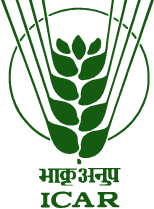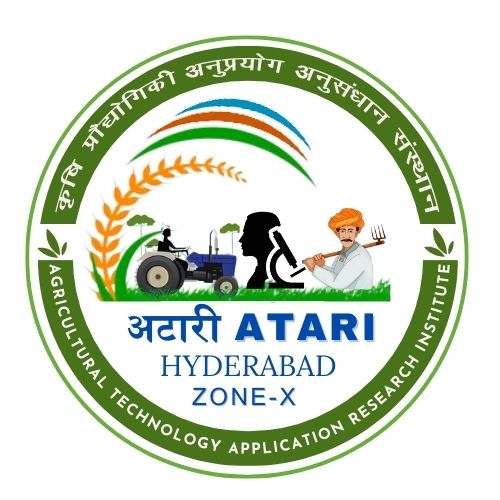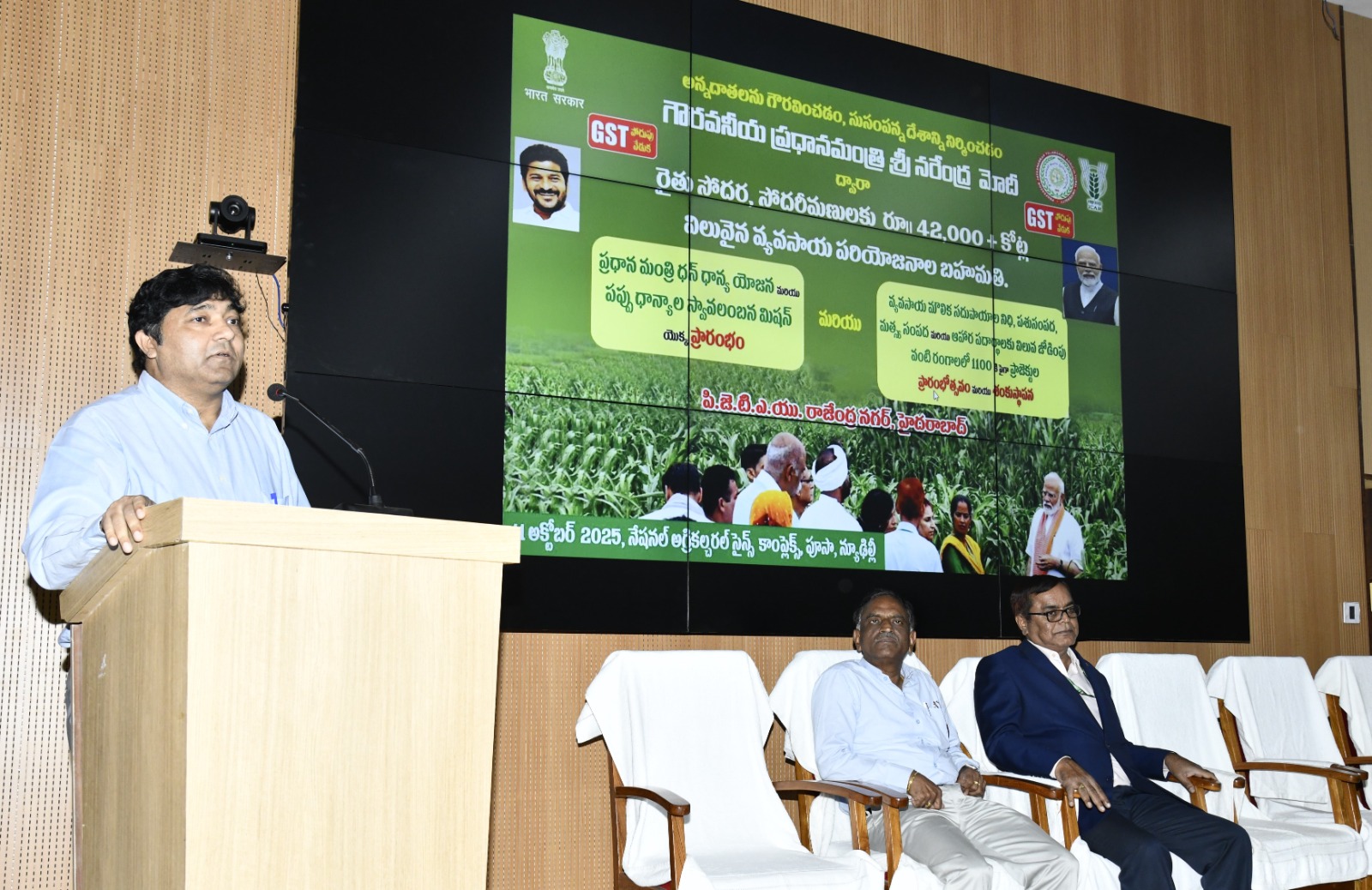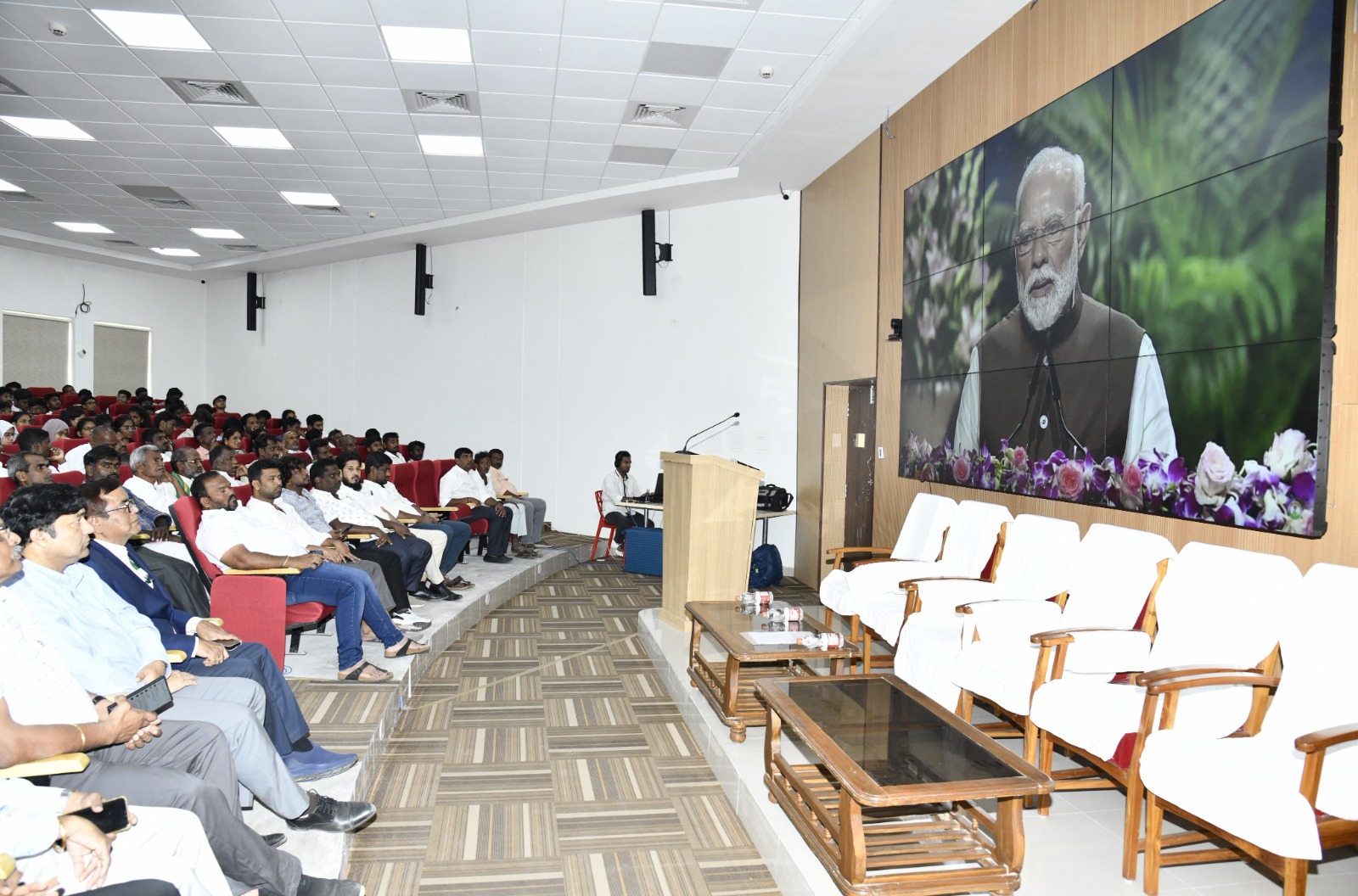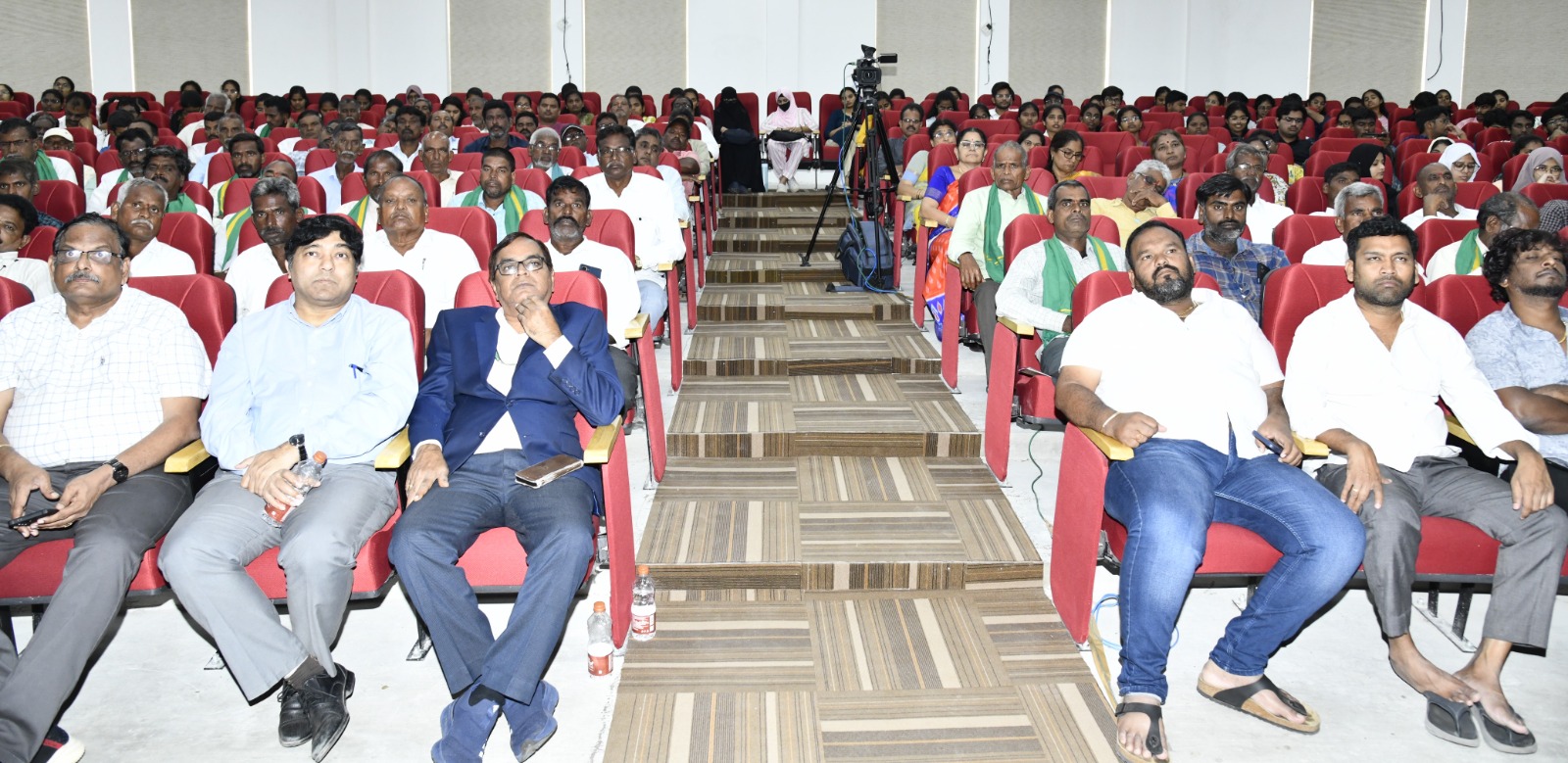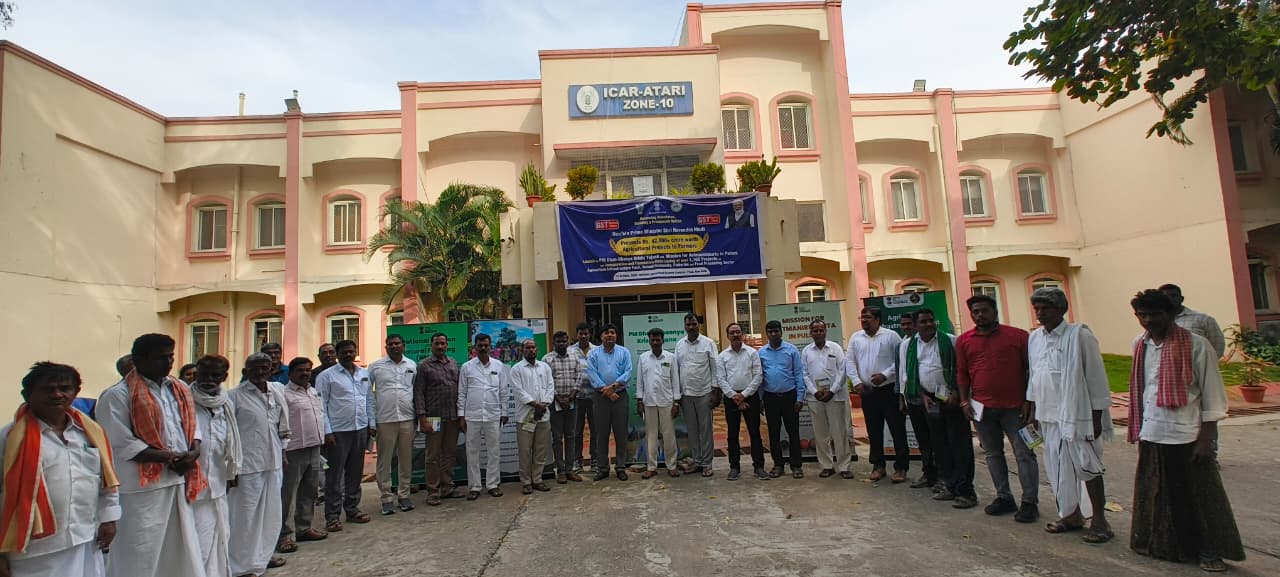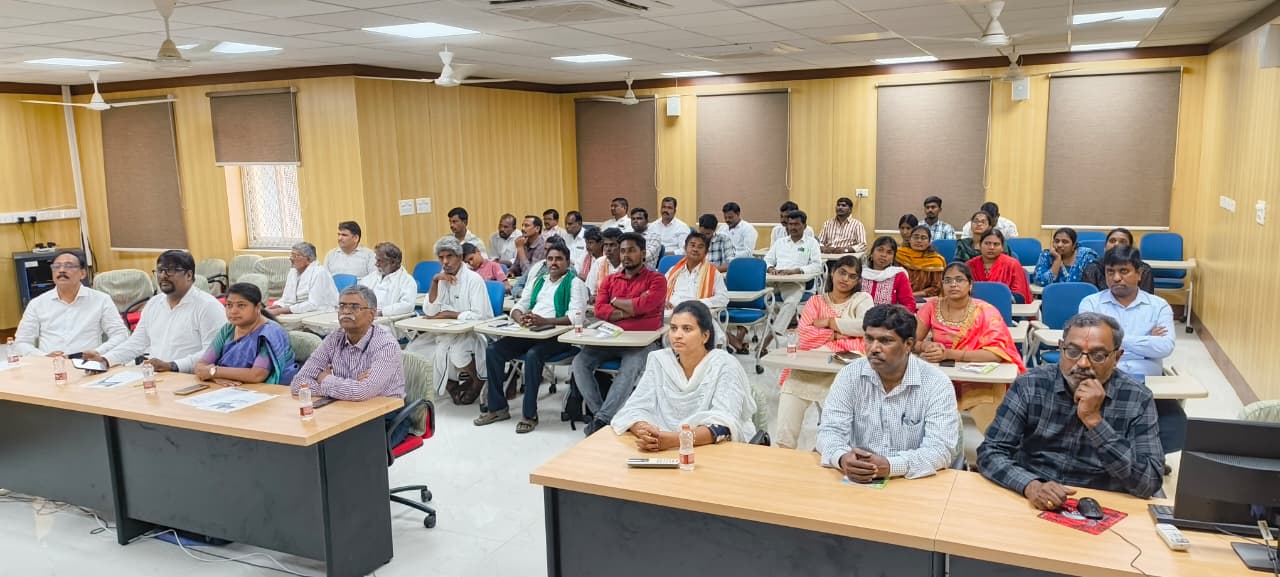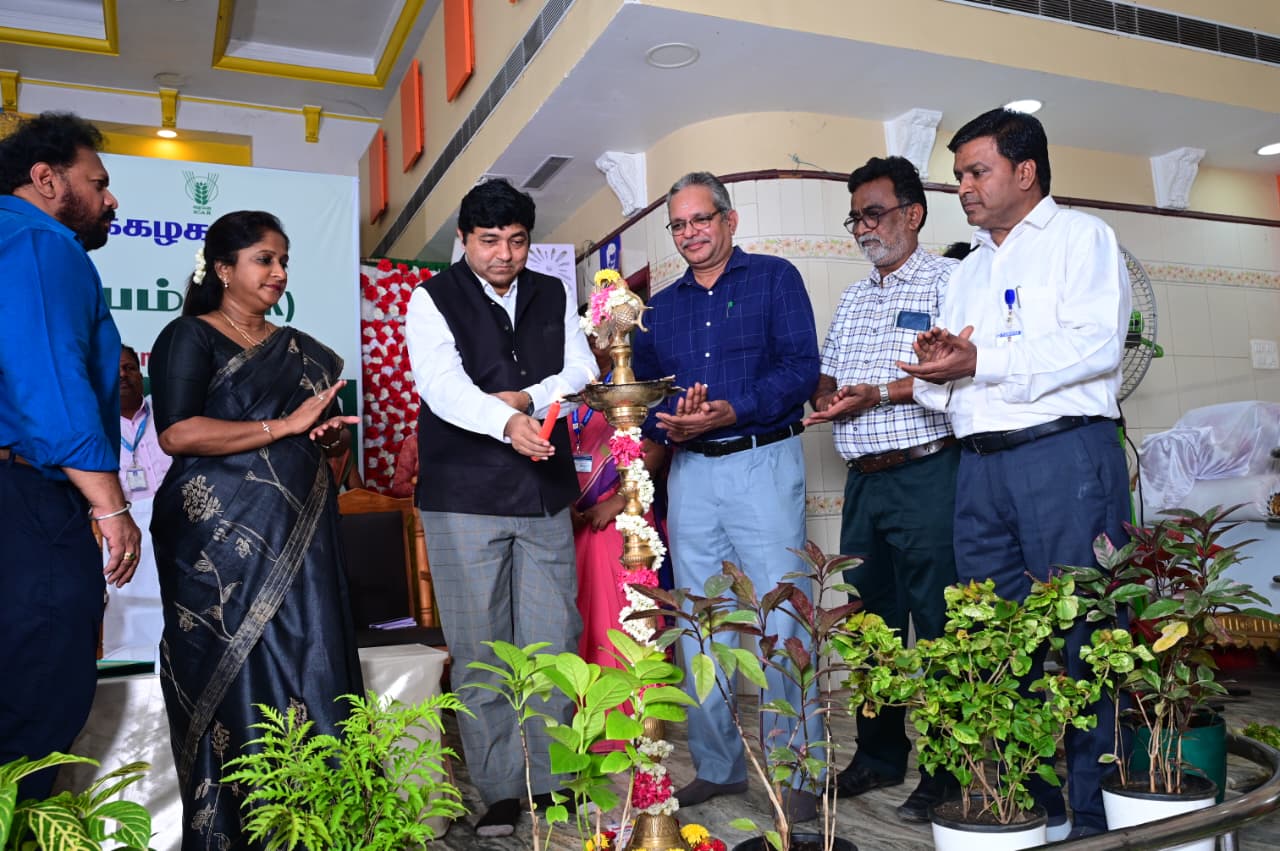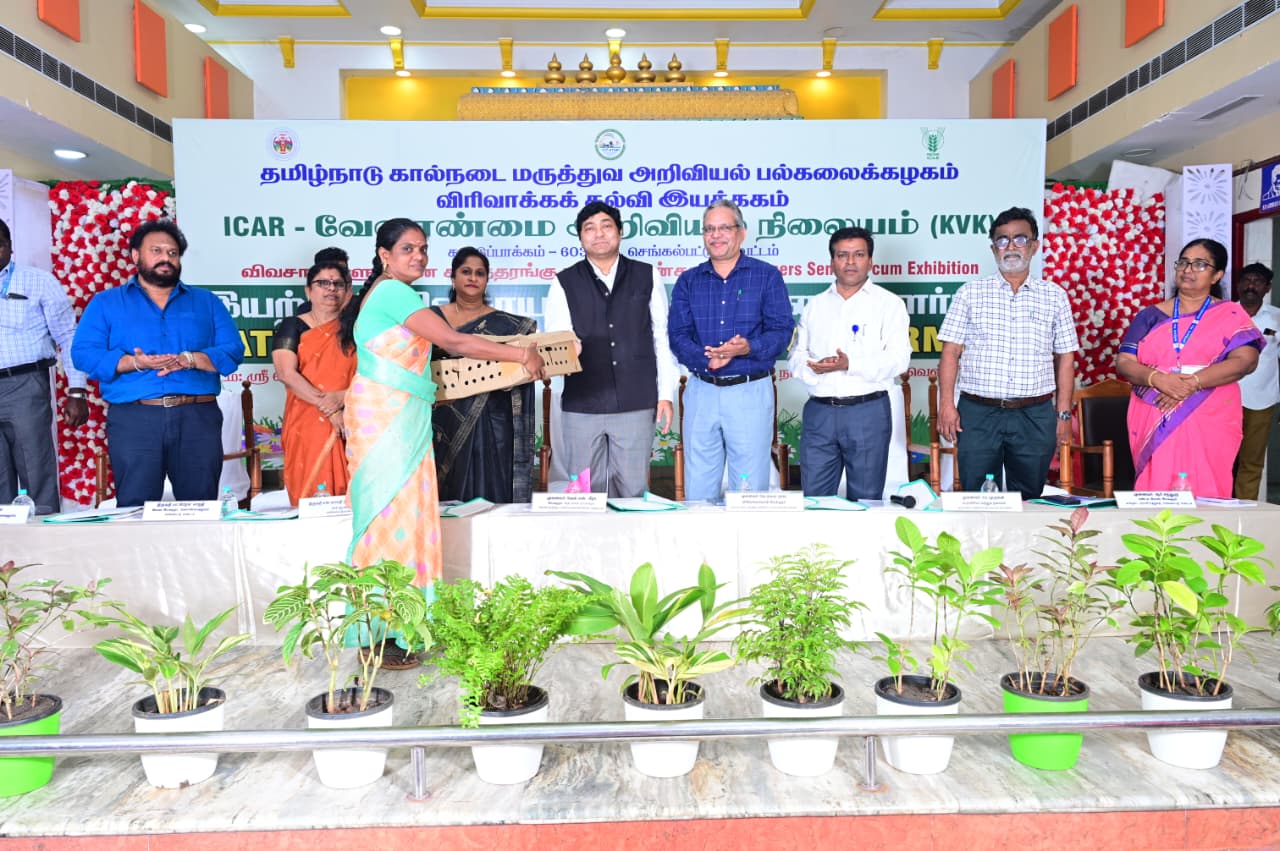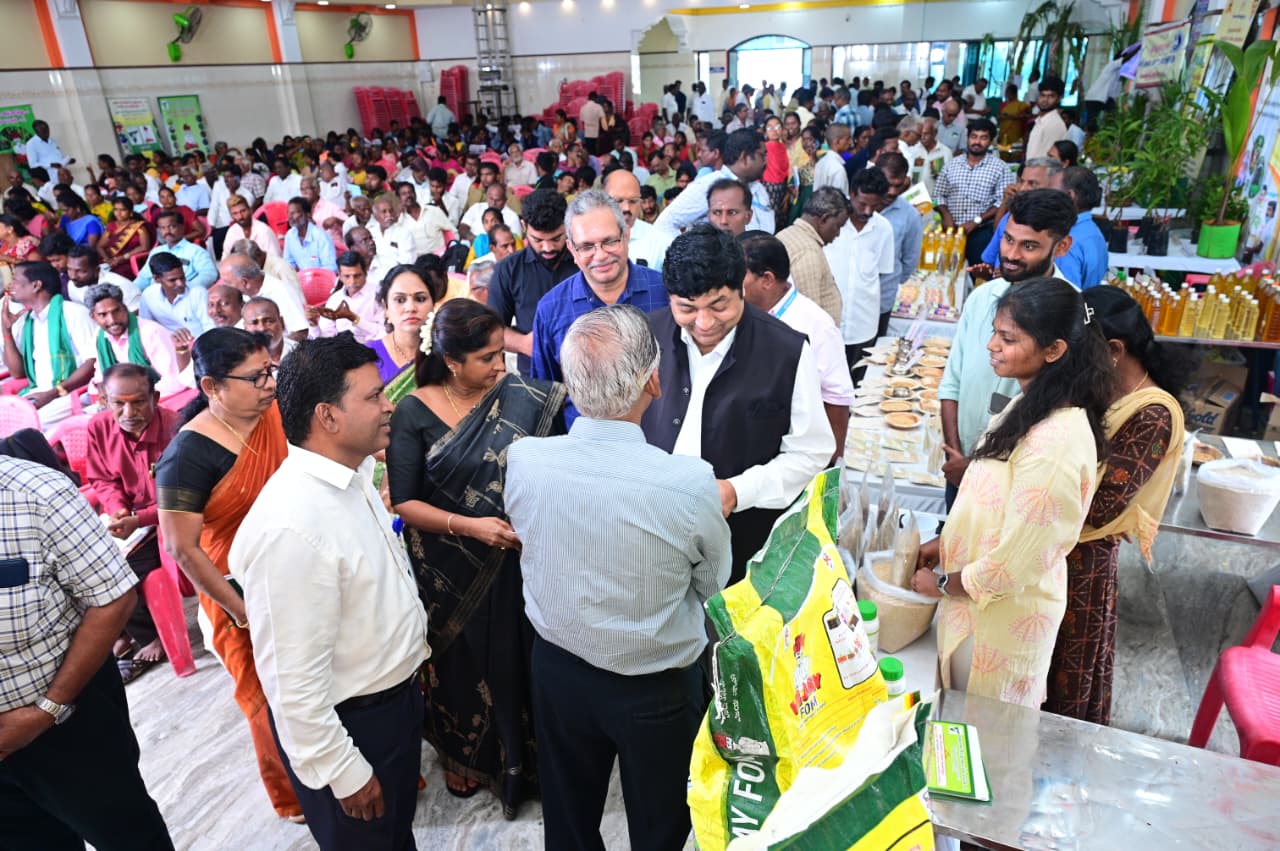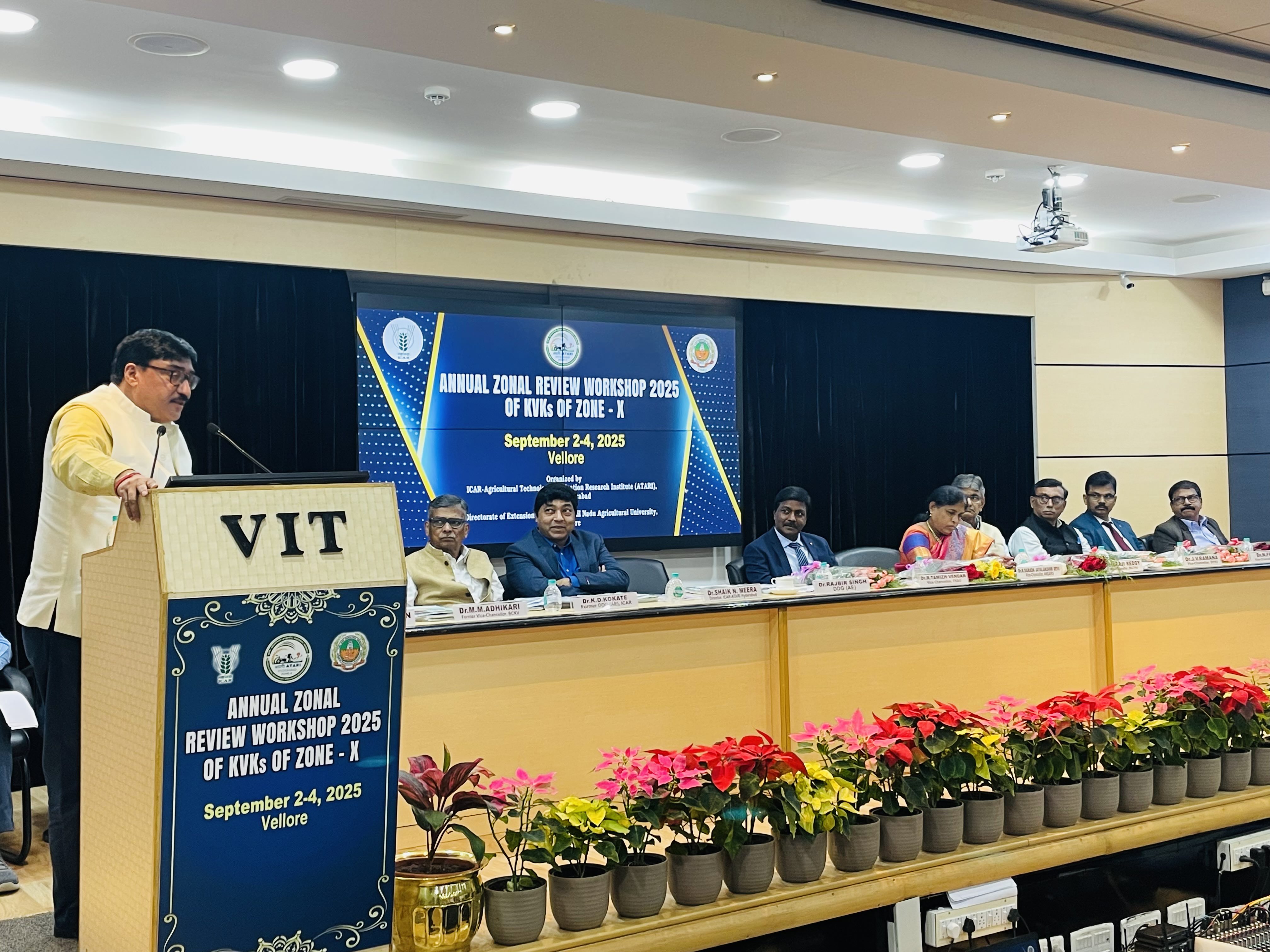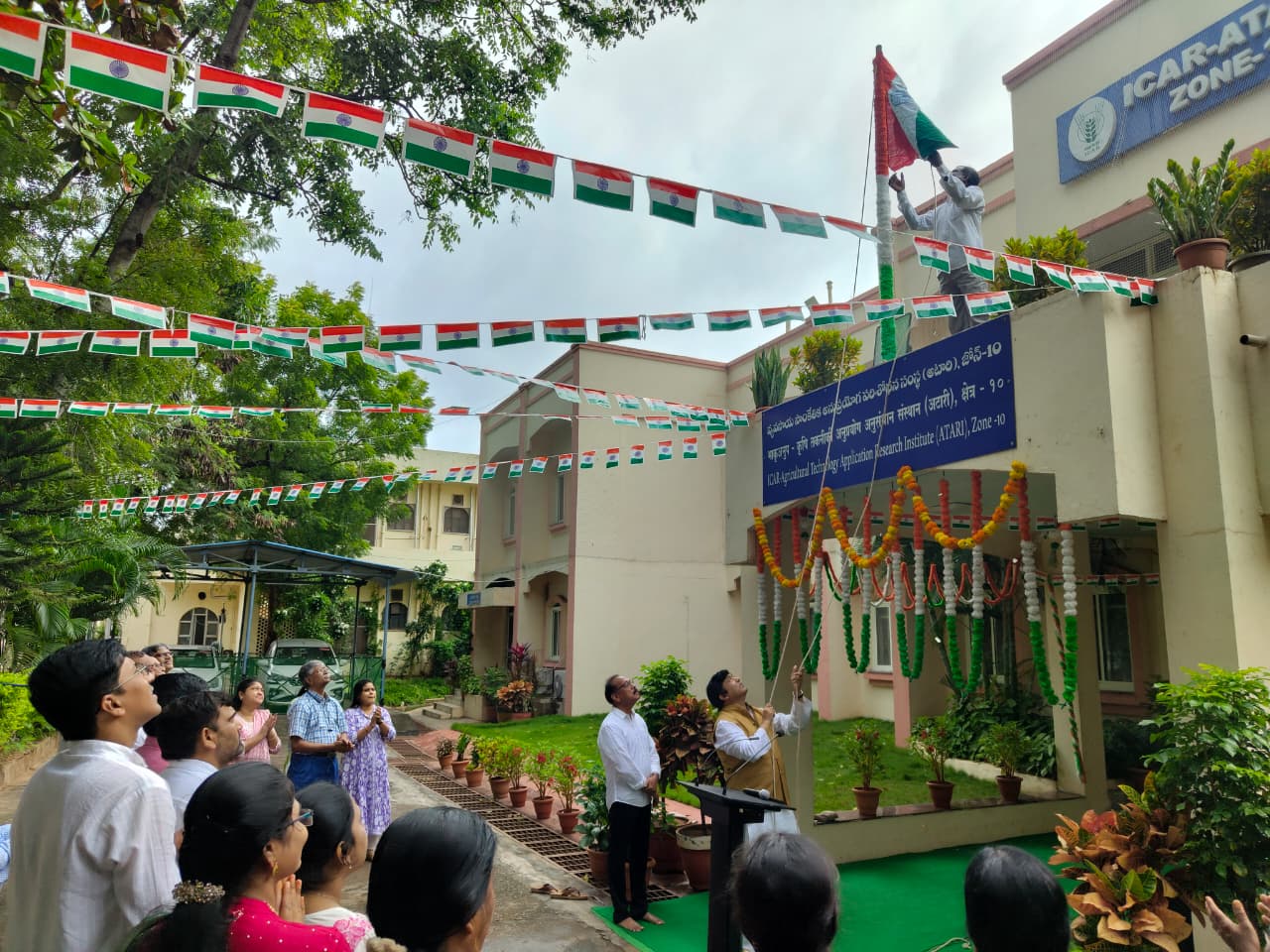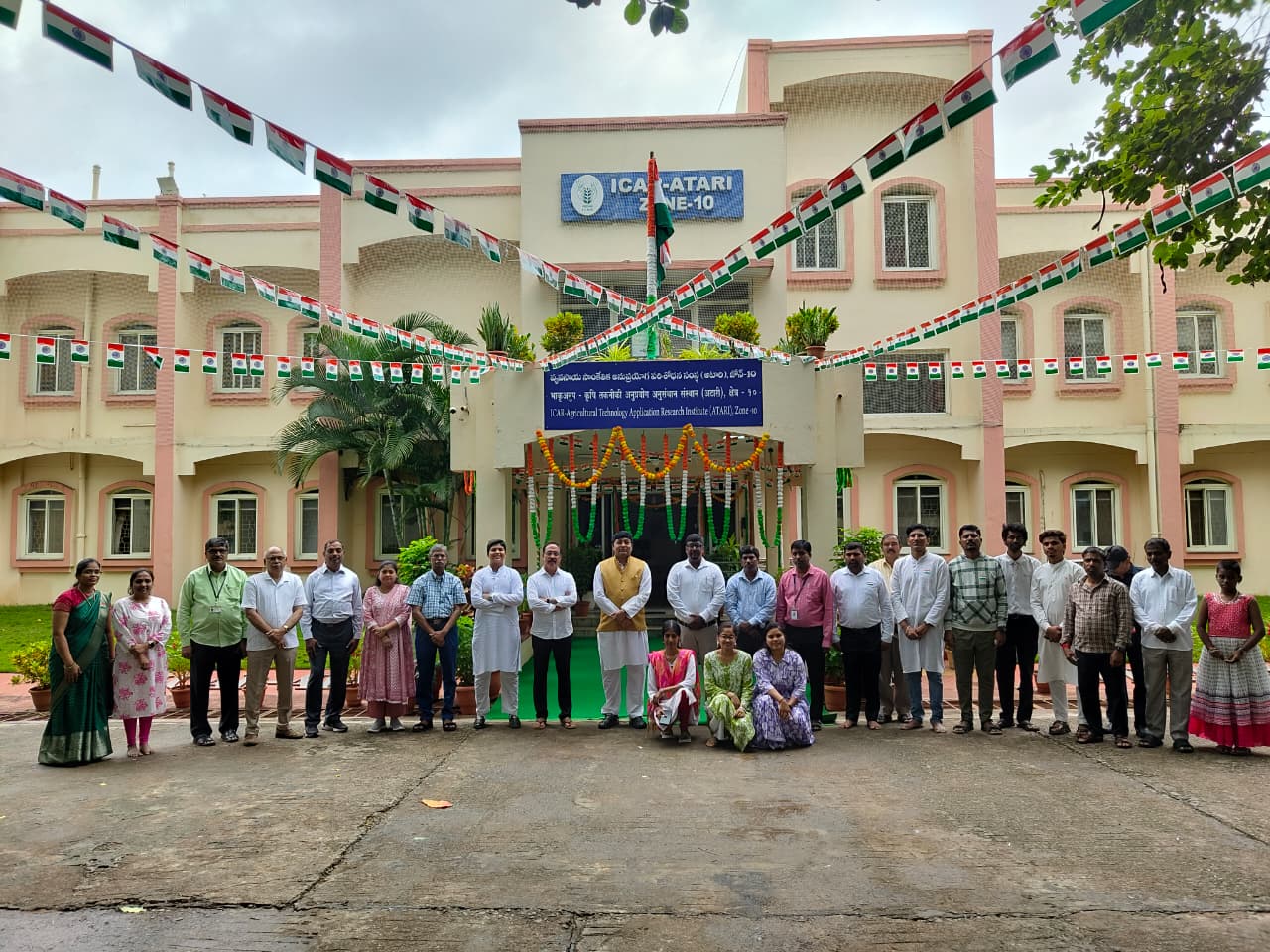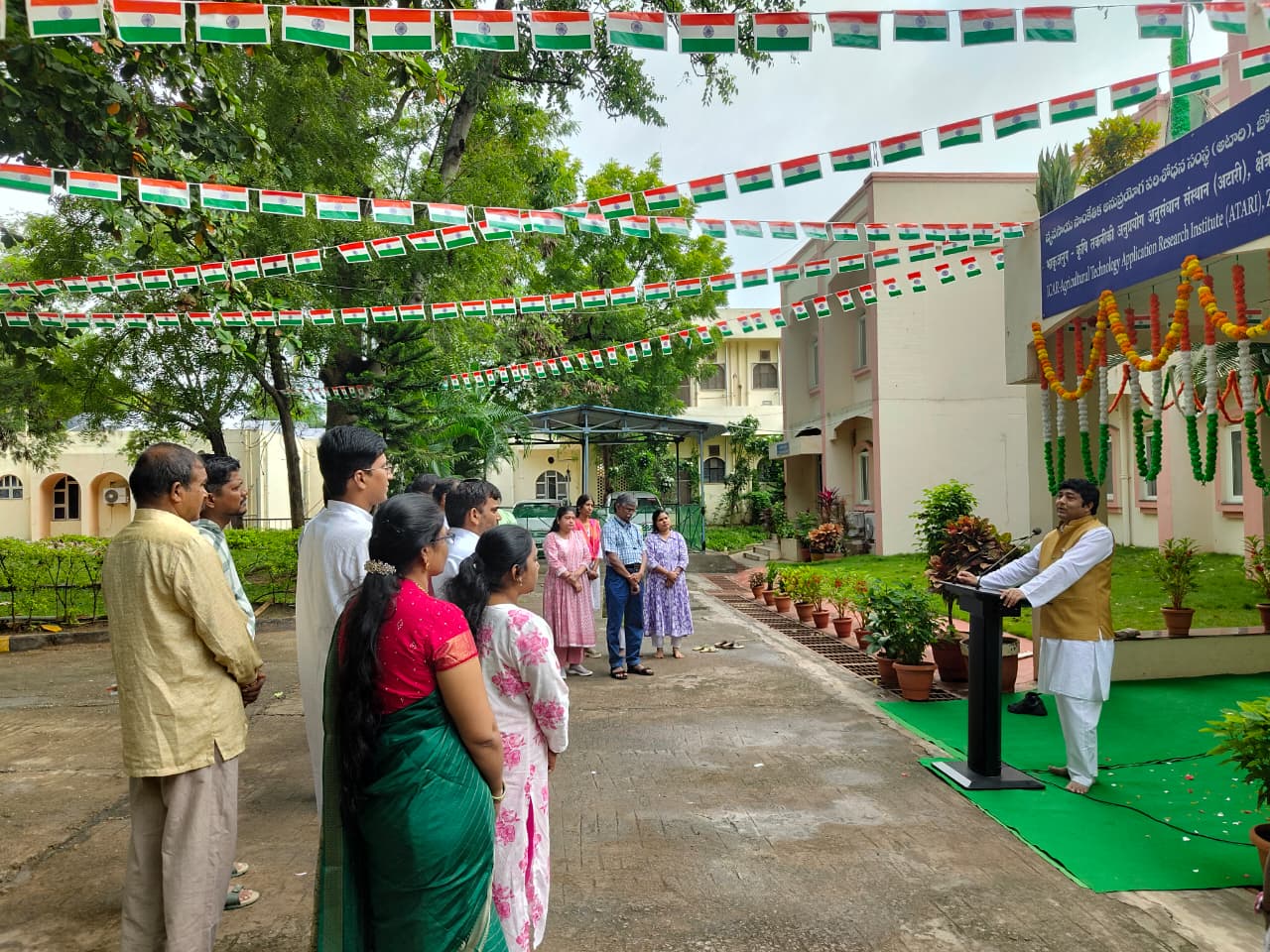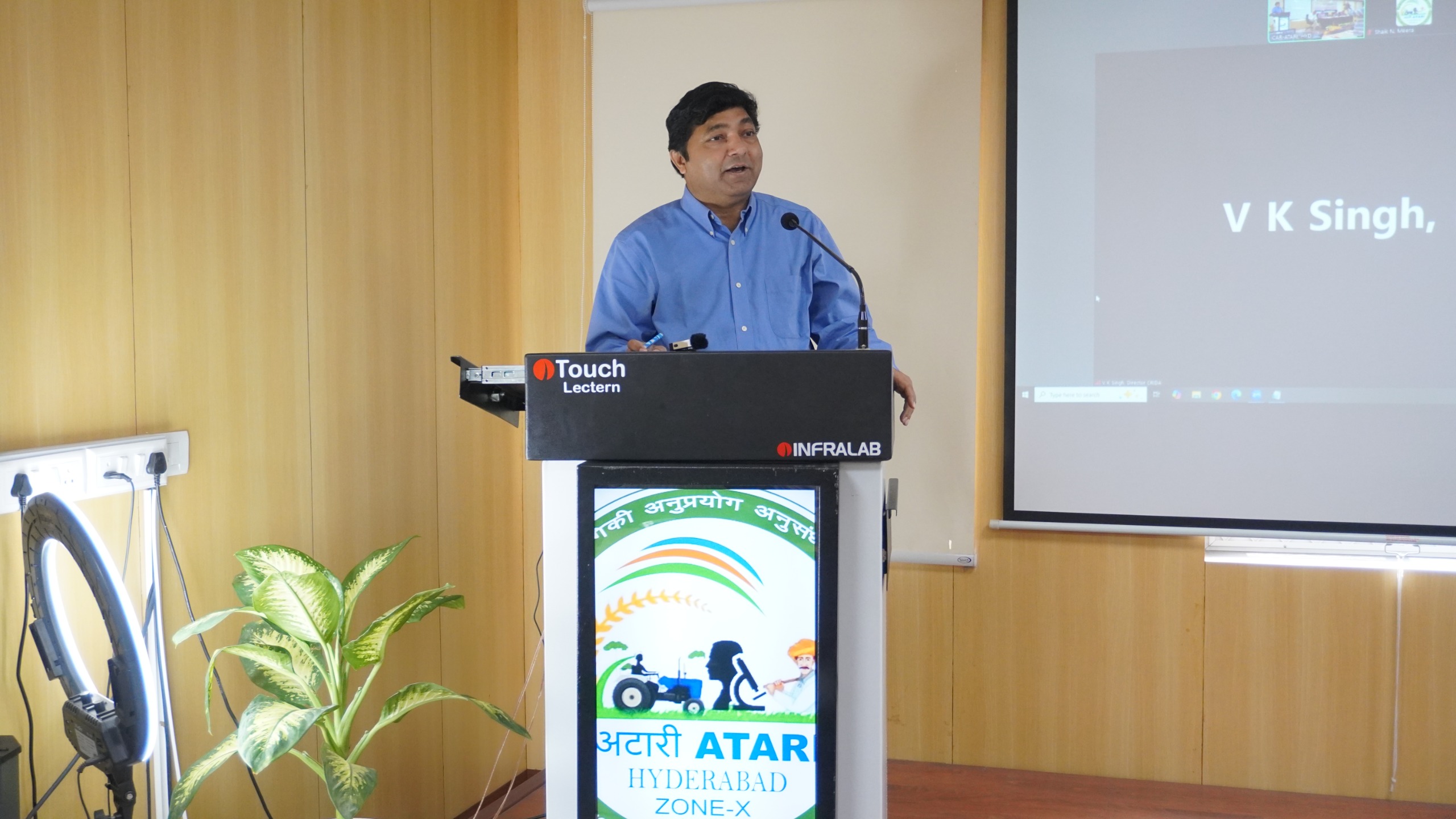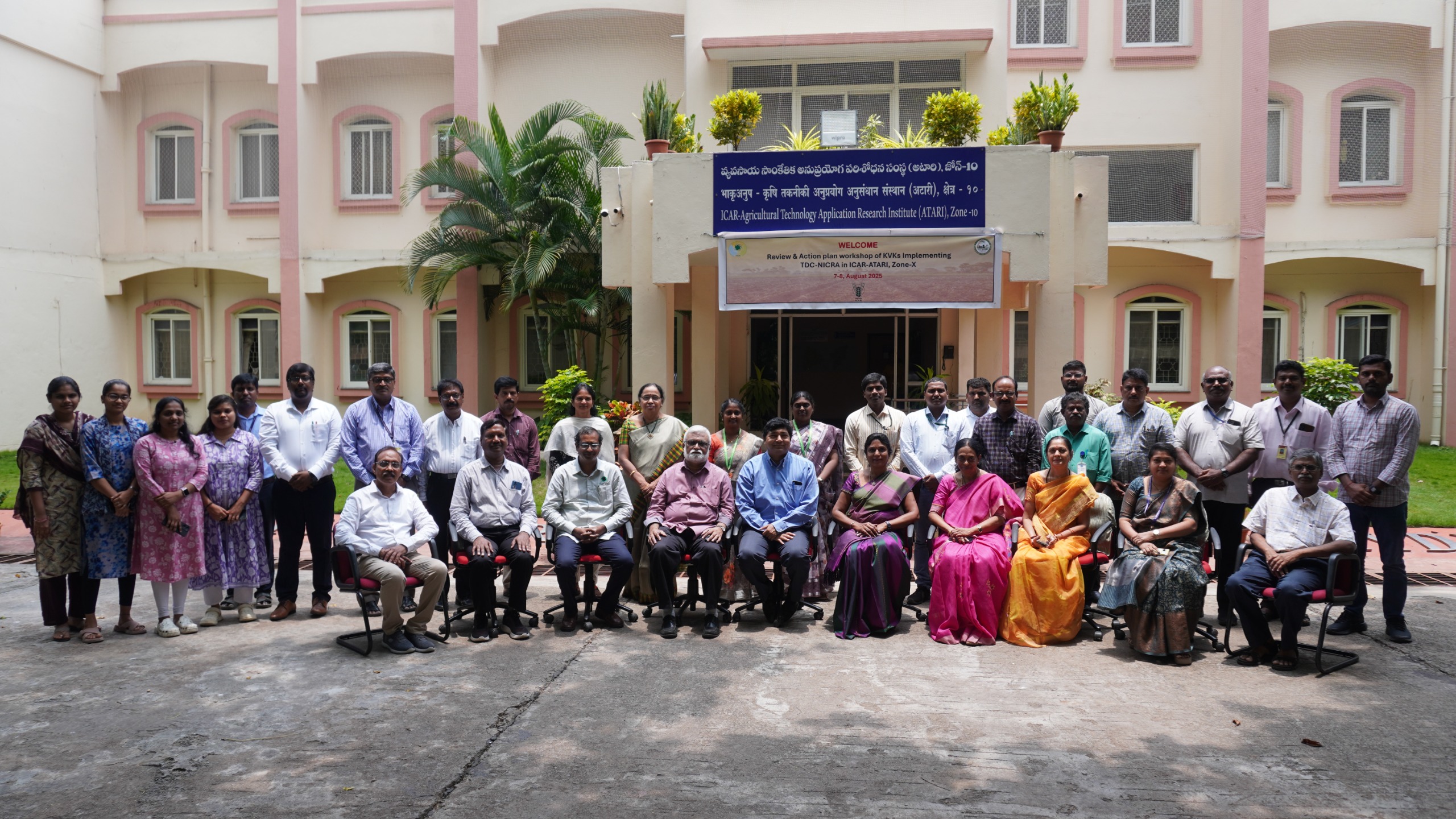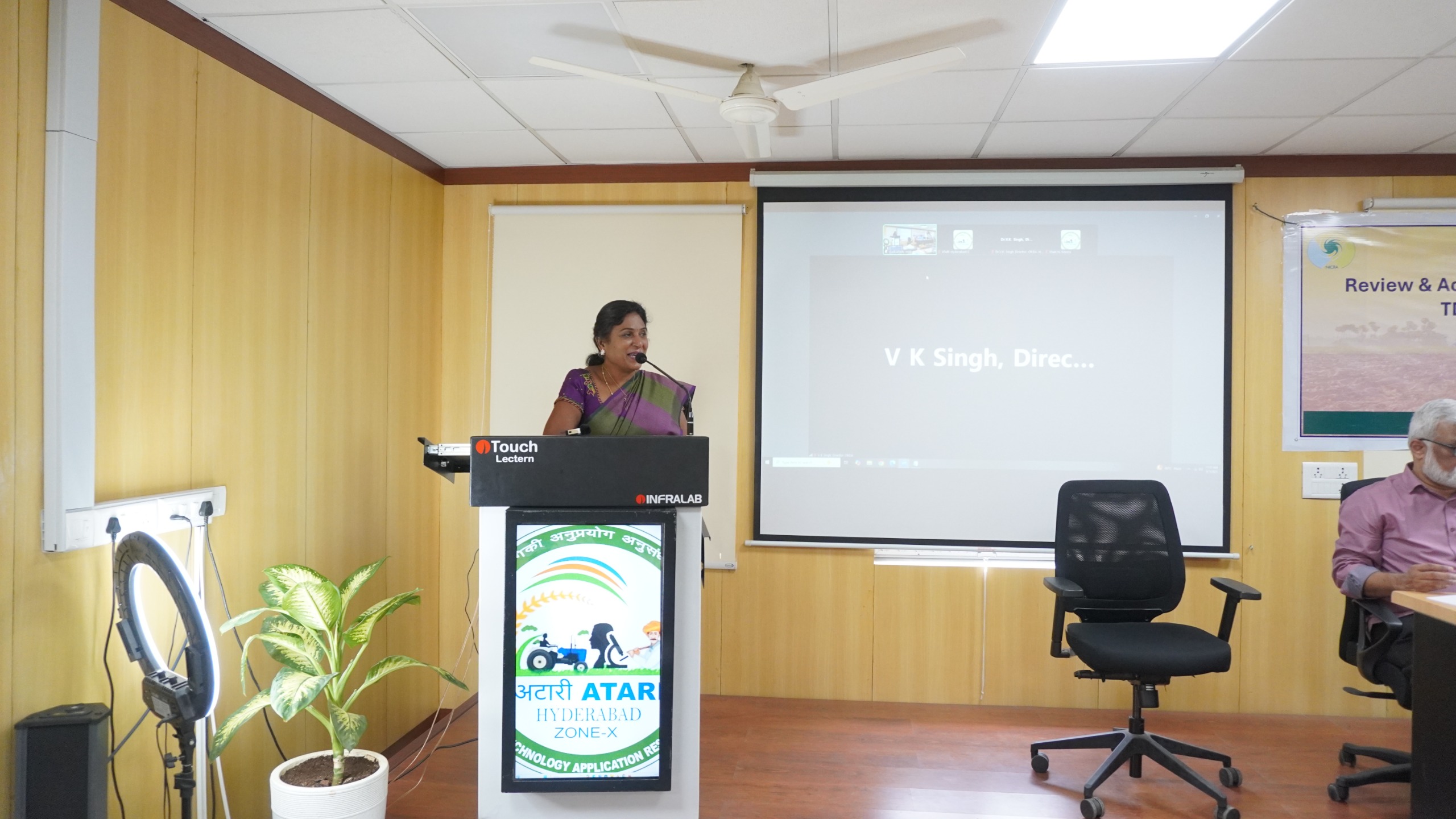Special Project on Cotton
Special Project on Cotton: Targeting technologies to agro-ecological zones- large scale demonstrations of best practices to enhance cotton productivity
Special Project on Cotton is implemented in Public Private Partnership (PPP) mode by ICAR-CICR, Nagpur with the participation of CITI & SIMA; Seed Industry Associations (NSAI and FSII); Extension partners (Cotton Development and Research Associations of CITI and SIMA; Agricultural Technology Application Research Institutes & their Krishi Vigyan Kendra's); State Departments of Agriculture-ATMA) and Textile partners and Cotton Corporation of India (CCI). The aim of this project was to demonstrate technological options available with ICAR-CICR and other relevant research organisations including private industries to overcome productivity bottlenecks in cotton production in the identified agro-ecological domains.
The pilot project comprises of three components viz, High density planting system (HDPS) in low productivity areas with shallow soils with canopy, nutrient, soil health management, Closer Spacing planting system in medium productivity areas with medium deep soils under rainfed cotton ecosystem with canopy, nutrient and soil health management and Production technology for ELS cotton in niche areas under rained/irrigated farming situation.
ICAR-ATARI Zone-X has implemented Special Project on Cotton in 21 KVKs of 3 States namely Andhra Pradesh, Telangana, Tamil Nadu. HDPS technology was demonstrated in 2030 ha area conducting 2176 demos. Closer Spacing planting system was demonstrated in 1581 ha area conducting 1889 demos. While Production technology for ELS cotton was demonstrated in 50 ha area conducting 91 demos.
Table 1. details of technologies demonstrated under special project on cotton
| S.No | State | Details of Interventions | |||||
|---|---|---|---|---|---|---|---|
| HDPS | Closer Spacing | Extra Long Staple (ELS) Cotton | |||||
| No. Demos | Area (ha) | No. Demos | Area (ha) | No. Demos | Area (ha) | ||
| 1 | Andhra Pradesh | 95 | 165 | 494 | 591 | 0 | 0 |
| 2 | Telangana | 2014 | 1815 | 1381 | 980 | 0 | 0 |
| 3 | Tamil Nadu | 67 | 50 | 14 | 10 | 91 | 50 |
| Total | 2176 | 2030 | 1889 | 1581 | 91 | 50 | |
Activities undertaken from June 2024 to January 2025
Different activities have been conducted by ATARI ZONE-X KVKs to increase awareness among farming society about different cotton production technologies like Farmers trainings, Field days, Workshops, Kisan mela, Social media advisories , Distribution of Leaflets , Brochures etc., A total of 91 Farmers training, 72 Field days, 12 Workshop and 9 Kisan melas activities are undertaken during the year with the participation of total 29809 beneficiaries. 134 Young Professionals are recruited under this project.
Table 2. Details of activities conducted by KVKs
| Sl.No | Particulars | No of activities | No of Participants |
|---|---|---|---|
| 1 | Farmers trainings | 91 | 9255 |
| 2 | Field days | 72 | 6523 |
| 3 | Workshops | 12 | 1059 |
| 4 | Kisan Mela | 9 | 4136 |
| 5 | Number of Monitoring visits by KVK YPs/ DNO | 3159 | 3089 |
| 6 | Number of Monitoring visits by external officials of State dept./ ICAR/ Univ./others | 222 | 646 |
| 7 | No. of farmer demonstrations identified / eligible for success stories | 170 | 376 |
| 8 | No. of Leaflets/ brochures/folders developed by KVKs | 39 | 4725 |
| 9 | Total | 3774 | 29809 |
High Density Planting System (HDPS)
High Density Planting System includes planting of recommended hybrids/varieties at a spacing of 90x15 cm with the help of pneumatic planter or manual sowing and management of Plant architecture with : Mepiquat chloride (Chamatkar) along with other recommended package of practices.
Seven recommended cotton hybrids were demonstrated through 2002 demonstrations covering 1885.8 ha under High-Density Planting System (HDPS). On an average HDPS demonstrations recorded 39.677% higher yields over the farmer practice indicating significant productivity gains through improved planting geometry and canopy management practices. The hybrid Rasi Swift (RCH 971 BG II) was demonstrated in 1305.78 ha which gave 55.17% higher yield in HDPS. Similarly, RCH 929 BG II, was demonstrated with 55.46% yield advantage in 481.38 ha in this system.
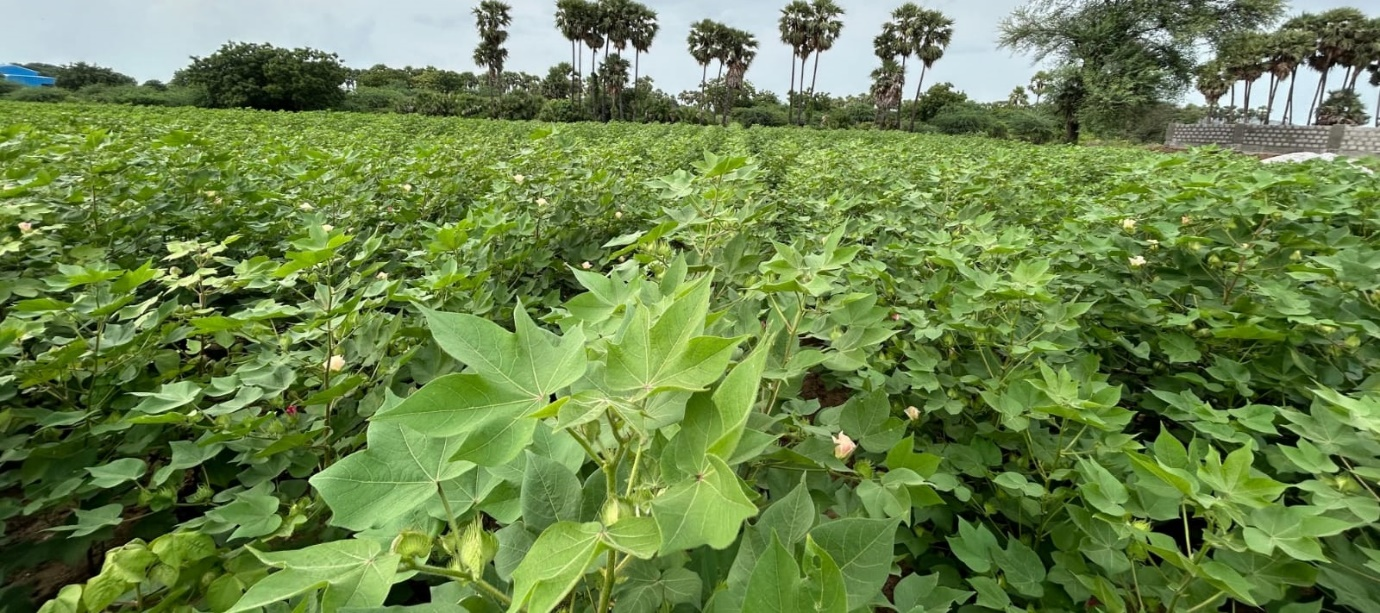
HDPS Field KVK Gaddipalli, Nalgonda dist, Telnagana
Table 3. Performance of HDPS technology in demonstrations
| Hybrid/Variety | No. of Demos | Area (ha) | Average Yield in Demo (Q/ha) | Average Yield in Control | Average % Yield Increase |
|---|---|---|---|---|---|
| Rasi Swift (RCH 971 BG II) | 1419 | 1305.78 | 29.39 | 19.44 | 55.17 |
| RCH 929 BG - II | 468 | 481.38 | 28.79 | 18.94 | 55.46 |
| US-4823 | 57 | 52.66 | 25.00 | 20.00 | 25.00 |
| Veda Platinum (JKCH 8836 BG II) |
47 | 33.80 | 27.90 | 23.30 | 19.87 |
| Others | 11 | 12.20 | 26.62 | 18.67 | 42.84 |
| Total/Average | 2002 | 1885.82 | 27.54 | 20.07 | 39.67 |
Closer Spacing Planting System
Under the system of sowing at a spacing of 90 x 30 cm with canopy management, 1466 demonstrations were conducted across 1268.8 ha area. The average yield under these demonstrations was 27.44 q/ha, which was 45.08% higher than the yield under farmers' practice (19.29 q/ha). All the hybrids outperformed their counterparts of the farmers' practice. The yield enhancement ranged from 24% to 60% depending on the soil condition, management and hybrids used.
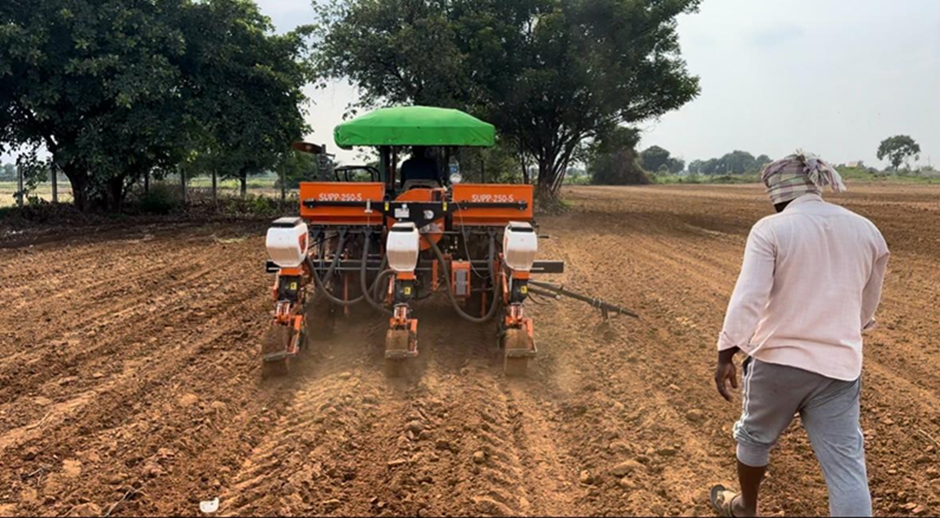
Sowing of HDPS cotton by pneumatic planter in Siddipet district, Telangana
Table 4. Performance of Closer Spacing technology in demonstrations
| Row Labels | No. of Demos | Area (ha) | Average Yield in Demo (Q/ha) | Average Yield in Control | Average % Yield Increase |
|---|---|---|---|---|---|
| Siri (NCS 927 BG II) | 393.00 | 396.00 | 24.63 | 18.99 | 31.52 |
| Armita (NCS-27780) | 167.00 | 181.10 | 28.44 | 22.94 | 24.44 |
| Rasi Swift (RCH 971) | 168.00 | 110.90 | 34.00 | 21.00 | 59.00 |
| Crystal (CCH 369) | 120.00 | 108.28 | 26.23 | 18.95 | 42.24 |
| Adhya (NCS 1134) | 84.00 | 91.80 | 27.93 | 18.54 | 55.17 |
| Sindu | 75.00 | 75.72 | 25.18 | 19.25 | 35.13 |
| Veda platinum (JKCH 8836 BG II) |
72.00 | 64.80 | 27.39 | 17.45 | 60.22 |
| Others | 387.00 | 240.20 | 25.71 | 17.17 | 52.93 |
| Total/Average | 1466.00 | 1268.80 | 27.44 | 19.29 | 45.08 |
Extra Long Staple (ELS) production technologies for niche areas
ELS cotton production technology standardized by ICAR-CICR was demonstrated in 50 ha by conducting 91 demonstrations in Tamil Nadu. On average, the yield obtained from these demonstrations was 16.31 q/ha, which was 39.43% higher than the farmers' practice yield of 11.78 q/ha. Among the hybrids, MRC 7918 BG II recorded the highest average yield of 18.98 q/ha, followed by Suraksha (17.7 q/ha). In terms of yield increase over control, the hybrid Kohinoor (Nuziveedu Seeds) showed the highest percentage increase of 47.28%, followed closely by Badshah (43%) and MRC 7918 BG II (37.29%).
Table 5. Performance of ELS technology in demonstrations
| Row Labels | No. of Demos | Area (ha) | Average Yield in Demo (Q/ha) | Average Yield in Control | Average % Yield Increase |
|---|---|---|---|---|---|
| MRC 7918 BG - II | 26 | 13.6 | 18.98 | 13.85 | 37.29 |
| Suraksha | 12 | 6.4 | 17.70 | 13.60 | 30.15 |
| Badshah (Nuziveedu seeds) | 27 | 15.0 | 14.20 | 9.93 | 43.00 |
| Kohinoor (Nuziveedu seeds) | 26 | 15.0 | 14.36 | 9.75 | 47.28 |
| Total/Average | 91 | 50.0 | 16.31 | 11.78 | 39.43 |
Costs and returns in cotton demonstrations
All three technologies, HDPS, closer spacing, and ELS cotton demonstrated higher net incomes compared to the farmers' practice. In the case of HDPS demonstrations, although the cost of cultivation increased by 27.97%, the gross income nearly doubled (94.91% increase), resulting in a 90.55% higher net income than the control plots. On average, this translated to an additional net income of approximately Rs.54,665 per hectare, indicating a strong economic advantage despite the higher input costs. In the closer spacing demonstrations, the cost of cultivation increased modestly by 6.83%. However, this was offset by a 47.92% increase in gross income, leading to a 44.25% higher net income when compared to farmers' practice. This confirms the economic viability of closer spacing as a strategy to improve returns. For ELS (Extra-Long Staple) cotton, the demonstration plots recorded a gross income of Rs.2,73,364/ha and a net income of Rs.1,34,811.83/ha, despite a higher cultivation cost of Rs.1,07,630.83/ha.
